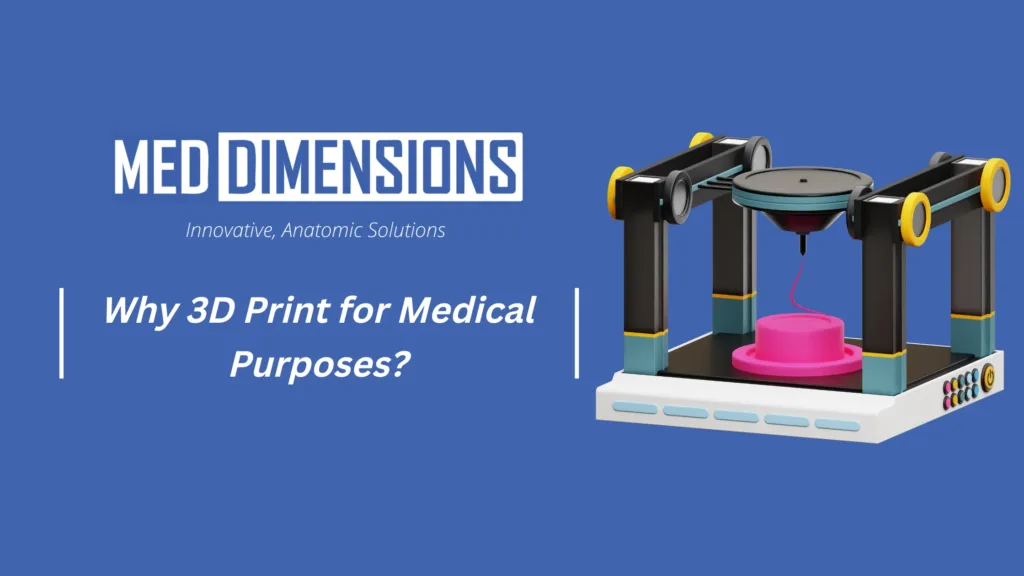Why 3D Print For Medical Purposes?

Over the past decade, 3D printing technology has rapidly advanced and become more accessible, leading to its integration in various fields, including medicine. In surgical practice, 3D printing has been gaining popularity due to its ability to create customized, patient-specific anatomical models, surgical instruments, implants, and prosthetics. In this blog, we will explore the use of 3D printing in surgical practice and its benefits.
The Benefits of 3D Printing in Surgical Practice:
- Personalized Patient Care: 3D printing allows surgeons to create customized anatomical models based on patient scans, providing a better understanding of the patient’s unique anatomy. This allows surgeons to plan surgeries more accurately and reduces the risk of complications during the surgery.
- Surgical Instrumentation: 3D printing has made it possible to create customized surgical instruments, which can be designed to meet specific surgical needs. This has led to improved surgical outcomes and increased safety for patients.
- Implants and Prosthetics: 3D printing has revolutionized the production of implants and prosthetics. With the ability to create patient-specific implants and prosthetics, surgeons can improve patient outcomes, reduce surgical time, and decrease the need for additional surgeries.
- Education and Training: 3D printing has also been used to improve the education and training of surgical residents and medical students. Anatomical models can be created to simulate surgical procedures, allowing students to practice surgical techniques and gain hands-on experience.
The Use of 3D Printing in Surgical Practice:
- Anatomical Models: Anatomical models created using 3D printing have been used to plan surgeries, improve surgical outcomes, and reduce surgical time. A study conducted in 2020 found that the use of 3D-printed anatomical models improved the accuracy of surgical planning and decreased the time required for surgical procedures (1).
- Surgical Instrumentation: 3D printing has been used to create customized surgical instruments for various surgical procedures. A study published in 2018 found that customized 3D-printed instruments reduced surgical time and improved surgical outcomes in patients undergoing spinal fusion surgery (2).
- Implants and Prosthetics: 3D printing has been used to create patient-specific implants and prosthetics. A study published in 2021 found that 3D-printed implants improved surgical outcomes and reduced the risk of complications in patients undergoing spinal fusion surgery (3).
- Education and Training: Anatomical models created using 3D printing have been used to improve the education and training of surgical residents and medical students. A study published in 2020 found that the use of 3D-printed anatomical models improved the surgical skills of surgical residents (4).
Conclusion:
The use of 3D printing in surgical practice has revolutionized patient care, surgical instrumentation, implants and prosthetics, and education and training. With the ability to create customized patient-specific anatomical models, surgical instruments, implants, and prosthetics, surgeons can improve patient outcomes and reduce surgical time. As 3D printing technology continues to advance, it is likely that its use in surgical practice will become even more widespread.
References:
- Zhang, J., Xu, L., Wei, B., & Wang, S. (2020). The application of 3D printing technology in the surgical treatment of thoracic spinal tumors. Journal of Orthopaedic Surgery and Research, 15(1), 1-8.
- Shin, M. J., Kim, H. J., Ha, K. Y., Kim, Y. H., Kim, K. N., & Yoo, J. H. (2018). A feasibility study on the clinical application of customized 3D printed instruments in thoracic and lumbar spine